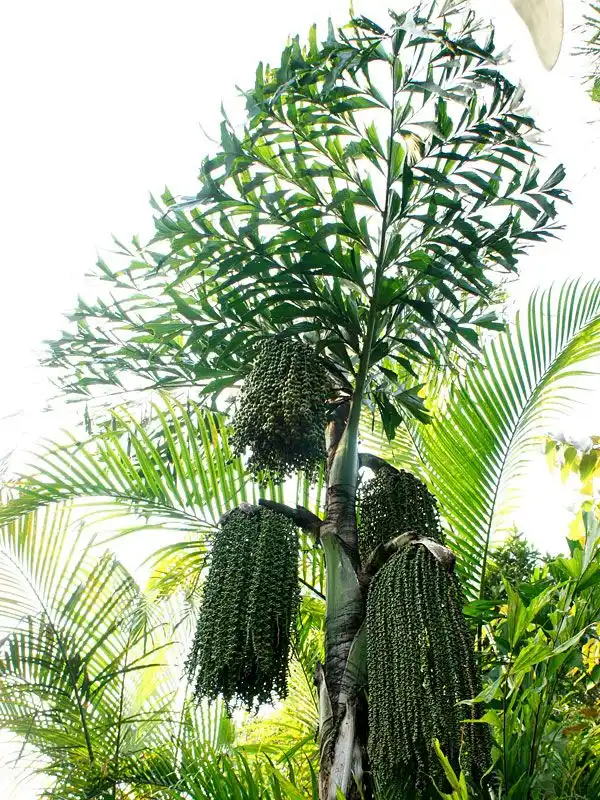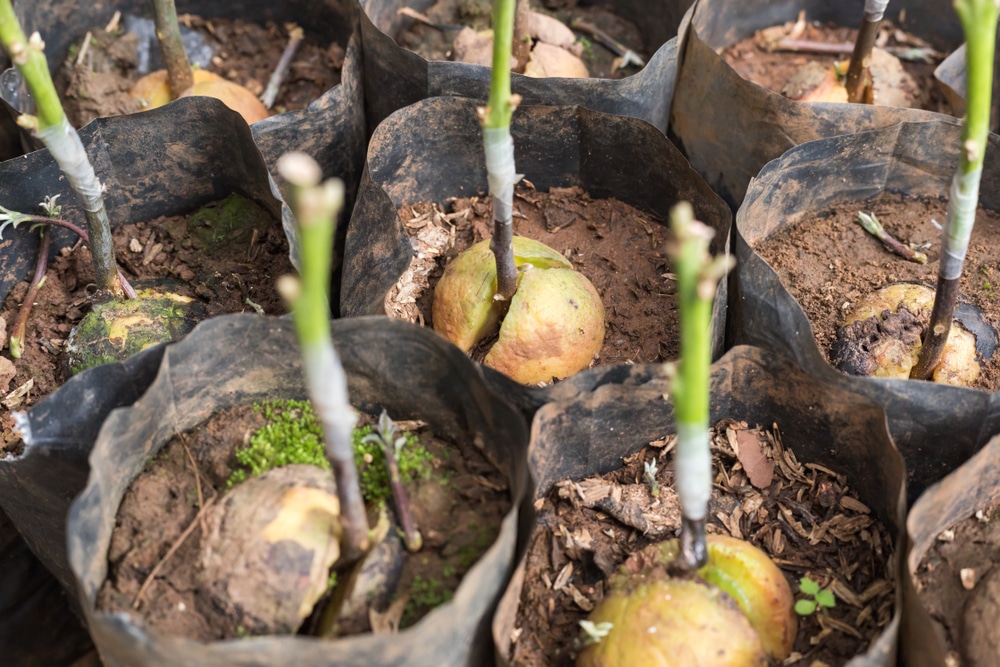The Fishtail Palm tree is classified under the Caryota genus, which is a group of palms known for their feathery and intricate leaves. Some of the most commonly cultivated varieties of Fishtail Palm include Caryota mitis, Caryota urens, Caryota obtusa, and Caryota maxima. These varieties differ in size, leaf shape, and growing conditions.
1.Caryota obtusa: giant fish tail palm
With a common name of giant fishtail palm, this variety can reach heights of 60-100 feet. Because of their large nature, these palms are not usually kept as indoor plant

Giant fishtail Palm is a popular ornamental tree, valued for its attractive appearance and ease of care. The tree is an excellent choice for you as it adds a tropical accent to your outdoor landscape.
It is a low-maintenance tree that requires minimal pruning and watering once established.
2.Dwarf Fishtail Palm (C. monostachya)

The tricky part of the Dwarf Fishtail Palm is that it is notorious for being rare, and difficult to find.
But if you can get your hands on this variety, you will not be disappointed. This variety is a suckering species, meaning that it grows multiple trunks in a cluster.
Because it is a dwarf variety, it only ever grows as tall as 10 feet tall. This means that it can easily spend its entire life in a single container, which is ideal for growing indoors.
The fruits of the Dwarf Fishtail form in tight, angling clusters. They start off light green, and slowly darken as they mature. The leaves are fishtail-shaped, bright green and leathery. Interestingly, they are able to grow pinnately or bi-pinnately.
3.Jaggery palm tree
This species of Caryota palm tree is one of the fastest-growing single-trunk species. When planted outdoors and properly maintained, this plant will grow taller than your home in just about five years. That’s why many people grow it as a houseplant with heavy pruning.
Fish Tail Palms care tips
Water the plant regularly, ensuring that the soil is consistently moist but not waterlogged. Allow the top inch of soil to dry out before watering again.
Remove any dead or damaged leaves to maintain the overall shape of the plant. Also, trim any offshoots that you don’t want to promote a more solitary growth habit.
Apply a balanced fertilizer every 2-3 months during the growing season (spring and summer) to promote healthy growth.
Common pests that can affect fishtail palms include scale insects and spider mites. Regularly inspect the plant for any signs of pests and apply appropriate insecticides if necessary.
In general, fishtail palms are best grown in well-draining soil and prefer slightly acidic conditions. They can tolerate full sun to partial shade, but they do best in bright, indirect sunlight. These palms grow in clusters and have stems covered in leaflets that resemble the tails of a fish, hence their name.
Uses and Landscape
Fishtail palms tree are commonly used as specimen (focal) plants in landscapes due to their unique foliage and branching structure.
They can add height and texture to gardens and are often planted near ponds or pools.
The clustering habit of these palms makes them an excellent choice for creating a natural escape or adding a tropical touch to your outdoor spaces.
Summary
Fishtail palms trees are beautiful and unique tropical plants that can thrive in the right conditions. With proper care and attention, these palms brings a touch of paradise to your landscape. Before planting fishtail palms, make sure to assess your local climate and choose a suitable variety and you will be rewarded with stunning foliage and the experience of growing your own piece of the tropics.
